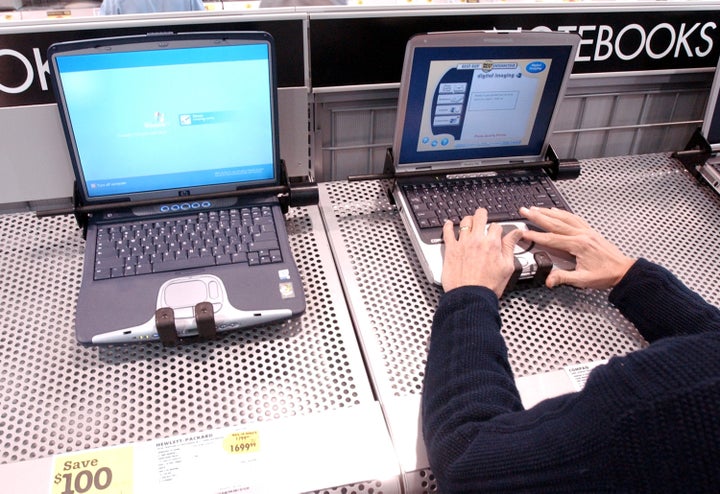
Students today live in a wired world. Educators strive to assure high school and post-secondary success for each student. We think it's a pretty good idea to recognize where students live outside the classroom and provide learning experiences that are real, relevant and engaging during the school day and beyond. This means creating innovative learning environments built around a culture that empowers, curricula that engages, and technology that enables.
In an average day, students interact and access data through various technologies -- YouTube, Twitter, Facebook, texting -- unless they encounter blocked sites due to district policies. Students' private and public lives blur and blend together. In today's educational world, it's important to bridge the gap between students' social and learning lives.
Dr. James Brown of New Technology High School in Napa, California is an expert when it comes to Digital Media. He teaches Digital Media Design and Criticism and is a trainer and fellow at the Center for Media Literacy. He has taught at New Tech High since 2008 and has been teaching digital arts since 2005.
Although Dr. Brown has taught "technology immersed education" for many years, this year he is teaching a "flipped classroom" -- a natural step for him in a school and classroom that is already 1:1 technology. (New Tech Network schools have included "blended learning" since the first school was established in 1996.) As Dr. Brown explains, "A flipped classroom is an ideology rather than a technique." He adds, "It's a form of blended learning -- which encompasses any use of Internet technology to augment classroom learning so that a teacher can spend more time actually interacting with students rather than lecturing."
In traditional high school settings, students listen to teachers lecture on a topic and then the students complete homework or take tests. In "Flip Teaching," students learn at least in part through online delivery of content and instruction, and then incorporate and apply what they have learned in their class time. The teacher's role changes from that of lecturer to facilitator, enabling the teacher to spend classroom time on additional learning-based activities including project-based learning (PBL). "Teachers can focus on the gaps between students' understanding of the content and their utilization of it," explained Dr. Brown.
Students at Napa New Tech High access course content through Echo -- a learning management system designed to support project-based learning, and facilitate communications and collaboration.
This is an important step towards breaking away from the four-wall classroom and time-based education. "If we have a superior technology -- such as Echo -- students can stay connected with the teacher and the course content, and we can focus less on when the learning happens and pay more attention to how it happens," said Dr. Brown.
Dr. Brown's digital media course (which, naturally, is technology-based) is a perfect fit for a "flipped classroom." "It makes sense to use technology to allow students to look at the content and experiment with it," he said. "Students have tremendous freedom to be content independent."
The "flipped classroom" enables students to be self reliant and teaches them to have self discipline. "As a teacher, I'm a resource helping them work on their mastery," Dr. Brown explained. "The student's understanding of the course material is self-guided. This type of process leads more to mastery rather than simply to proficiency."
This type of learning environment also offers the flexibility to accommodate a student's individual working style and needs. "In our Digital Media courses, formative assessments become activities that students can perform either online or offline -- individually or in groups," Dr. Brown added.
When students meet with Dr. Brown, he is clarifying subject matter, rather than having them study it. It affords greater student experimentation and independence and enables students to take responsibility for their own learning. "Students are thriving in this learning environment," Dr. Brown observes.
As an example, Dr. Brown points to his students' video which won the Adobe Youth Voice competition last year and was recently highlighted in the KQED (public radio) sponsored Bay Area Youth Media Network "Rise to the Occasion Youth Media Festival."
In a "flipped classroom" students are able to learn at their own pace and delve deeper into a subject than they typically can in a traditional lecture-style classroom. I would call this a great flip forward!
